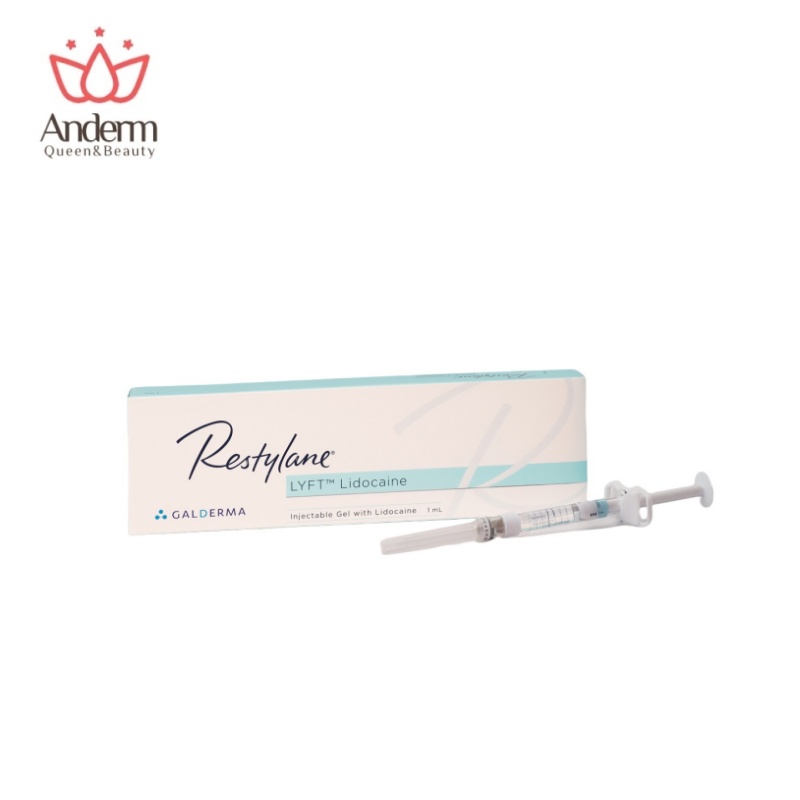What is Restylane Lyft?
Restylane Lyft is a hyaluronic acid (HA)-based dermal filler designed to add volume and lift to the skin. It’s part of the Restylane family, known for biocompatibility since HA naturally occurs in the body. It is specifically formulaterd for lifting and volumizing areas like the cheeks and correcting moderate to severe facial wrinkles.
Primary Uses:
- Facial Contouring:Enhances cheek volume and corrects age-related midface volume loss.
- Wrinkle Reduction: Treats moderate to severe facial wrinkles (e.g., nasolabial folds).
- Hand Rejuvenation: FDA-approved to restore volume to the back of the hands, reducing a sunken appearance.
How It Works:
HA attracts water, plumping the skin. Restylane Lyft has a thicker gel consistency compared to other Restylane products, making it ideal for deeper injections and structural support. Results are immediate and last 6-12 months, varying by individual metabolism and treatment area.
Key Features:
- Contains lidocaine to minimize discomfort during injection.
- Non-permanent; touch-ups are needed to maintain results.
- Minimally invasive with no downtime, though minor swelling/bruising may occur.
Procedure Details:
- Duration: Typically 30-60 minutes in a clinic.
- Aftercare: Avoid exercise, alcohol, or extreme sun exposure for 24-48 hours.
Safety & Side Effects:
- Common: Temporary redness, swelling, or bruising.
- Rare: Vascular occlusion (blockage of blood vessels) if improperly injected.
- Contraindications: Avoid if allergic to HA or lidocaine.
Alternatives:
- Juvederm Voluma: Another HA filler for cheek augmentation.
- Radiesse: Calcium hydroxylapatite-based, stimulates collagen but isn’t HA.
Expert Tip:
Always choose a board-certified injector (dermatologist/plastic surgeon) to minimize risks and ensure natural results. Discuss your goals and medical history during consultation.

restylane

restylane










































